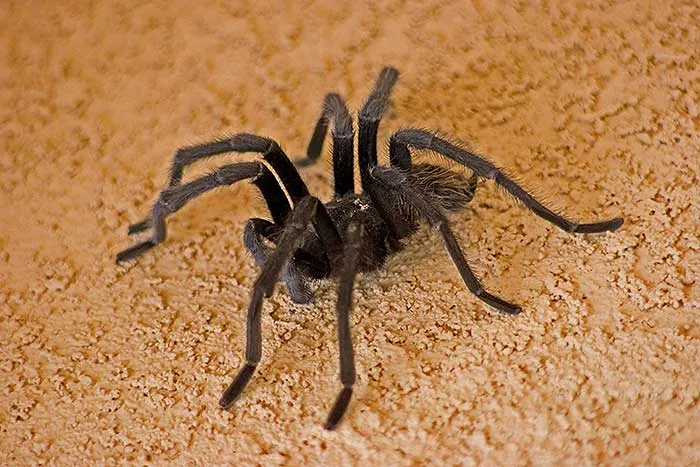Are Tarantulas Venomous? 5 Key Facts
The question of whether tarantulas are venomous is a common one, especially among those with an interest in arachnids or who may encounter these large spiders. The answer, in short, is yes, tarantulas are venomous. However, the effects of their venom on humans are often less severe than many people believe. Their size and imposing appearance can be intimidating, leading to misconceptions about their danger. This article aims to dispel some of these myths and provide a clear understanding of tarantula venom, its effects, and how to handle these creatures safely. We will explore key facts, the types of venom they possess, the impact of bites on humans, common myths, and practical advice on handling and treatment. The goal is to equip you with accurate information, allowing you to appreciate these fascinating creatures and understand their place in the ecosystem. It is important to approach this topic with a balance of respect and caution, appreciating both the biological realities and the safety considerations involved.
What Type of Venom Do Tarantulas Possess?
Tarantulas possess a type of venom that is primarily designed to subdue their prey, which typically consists of insects, other spiders, and occasionally small vertebrates like lizards or mice. This venom is a complex mixture of various compounds, including enzymes and neurotoxins. These compounds work in tandem to immobilize the prey, breaking down tissues, and aiding in digestion. The venom of a tarantula isn’t typically potent enough to cause significant harm to humans in most cases. The composition of the venom varies somewhat between different species of tarantulas, which can influence the severity of the effects. Although the venom is not particularly dangerous to humans, it still plays a crucial role in a tarantula’s survival and hunting strategy. The venom allows the tarantula to capture, paralyze, and begin the process of digesting its meal. Understanding the nature of their venom is key to addressing the common fear associated with these spiders.
The Impact of Tarantula Bites on Humans

When a tarantula bites a human, the experience is rarely life-threatening. The effects can vary depending on several factors, including the species of tarantula, the amount of venom injected, and the individual’s sensitivity. Common symptoms of a tarantula bite include localized pain, redness, and swelling at the bite site. Some people might experience itching, muscle cramps, or nausea. In rare cases, and particularly for those with allergies, more severe reactions such as difficulty breathing or anaphylaxis can occur, requiring immediate medical attention. The psychological impact, such as fear and anxiety, can sometimes be more distressing than the physical symptoms. It is important to remain calm and seek appropriate medical advice if you suspect a bite, monitoring for any unusual reactions. Most bites heal within a few days or weeks, and many people experience only mild discomfort. Understanding the potential symptoms and how to manage them can ease anxiety and improve outcomes.
Myth vs Reality Tarantula Venom
Numerous myths surround tarantula venom, often exaggerating its danger. A common misconception is that tarantula bites are always extremely painful and can lead to severe health issues. While bites can be painful, this is not usually the case, and serious medical complications are rare. Another myth suggests that tarantula venom is deadly to humans, which is generally untrue. Most tarantulas have venom that is more effective at subduing insects and small prey rather than causing serious harm to humans. The truth is that the venom of most tarantula species is relatively mild to humans, and the effects are comparable to those of a bee sting. There is no evidence to support the common belief that tarantula bites always require immediate hospitalization. By understanding the facts, we can separate the exaggerated myths from the reality of tarantula venom, allowing for a more accurate perspective of these animals. The focus should be on education and accurate information to dispel fear and misinformation.
How to Handle a Tarantula Safely
If you choose to handle a tarantula, it’s crucial to prioritize safety. Firstly, always wash your hands thoroughly before and after handling. Use a gentle approach and avoid sudden movements. When handling, allow the tarantula to walk onto your hand rather than picking it up. The less you handle it, the better. Never put your face close to the spider. It is always advisable to handle tarantulas in a controlled environment where any escapes can be prevented. If you are not experienced with tarantulas, it’s best to observe them without handling. Avoid putting your hands into the enclosure unless you have a specific reason. Use tools like long tongs or a catch cup to move them safely. Understanding a tarantula’s behavior, such as when it feels threatened, can minimize the risk of a bite. By following these safety guidelines, you can minimize the risk of a bite and ensure a positive experience for both you and the tarantula.
Treating Tarantula Bites at Home

If you are bitten by a tarantula, several steps can be taken to address the bite effectively. First, gently wash the bite area with soap and water. Apply a cold compress to reduce pain and swelling. If there is a significant amount of pain or swelling, consider taking an over-the-counter pain reliever such as ibuprofen or acetaminophen. Monitor the bite site for signs of infection, such as increased redness, warmth, or pus. Keep the area clean and dry to prevent infection. Most bites heal on their own within a few days or weeks. Seek medical attention if symptoms worsen, or if you experience difficulty breathing, severe allergic reactions, or other concerning symptoms. By following these steps, you can manage most tarantula bites effectively at home and promote proper healing. In case of severe reaction, please seek medical help immediately.
The Significance of Tarantula Venom Research
Research into tarantula venom is an active field that offers numerous potential benefits. Scientists are studying tarantula venom for its potential medical applications, including the development of new drugs and therapies. Some venom components show promise in treating chronic pain, cardiovascular diseases, and even certain types of cancer. Understanding the complex composition of venom can also lead to improved antidotes and treatments for spider bites. This research not only benefits human health but also enhances our knowledge of biodiversity and the ecological roles of tarantulas. By supporting and funding venom research, we can advance medical discoveries and develop better strategies for the conservation of these fascinating creatures. The continuous research is important for medical breakthroughs.
